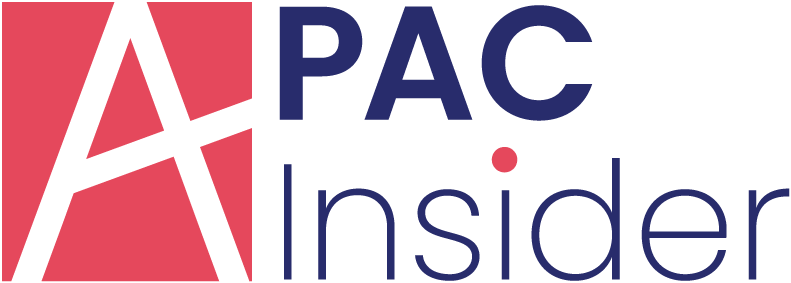
If you need to make a major investment for your business, you shouldn’t be afraid to explore financing options. It’s a good idea to speak with a financial advisor so you have a clear view of how taking on debt can impact your taxes and cash flow.
There are multiple funding options available for entrepreneurs. Proceeds can be used to purchase new equipment, expand the locations of stores or warehouses, or inject money into your business to help your cash flow. Be sure to check with your lender to make sure the way you want to use the loan is acceptable.
Here are some of the main financing options available for business owners.
1. Crowdfunding financing
Crowdfunding can be a great way of funding new projects, primarily through online forums and specific crowdfunding platforms, by raising money from the general public.
The crowdfunding option works best for consumer-facing businesses that have a product or vision that everyday people can get behind. You can get started on popular sites like Kickstarter®, GoFundMe®, and Indiegogo®.
One of the main advantages of using crowdfunding to fund your new investment is that you gain access to a larger and more diverse group of investors. Equity crowdfunding is also an option available to you. It enables public investors to take a proportionate slice of the equity in your business in return for their money.
But there are drawbacks, such as the fees associated with crowdfunding platforms and, on some sites, the inability to use pledged funds if you don’t reach your funding goal.
2. Equipment financing
If you need to invest in equipment for your business, you have the option of getting a loan from a lender that’s an expert in your industry. You can then make simple repayments and eventually own the equipment.
For example, if you run a machine shop business, you would need to make major investments for equipment like lathes, mills, and press brakes. In which case, you could find a dealer that offers financing facilities.
Look for a true simple-interest loan with flexible financing structures.
Once you pay back the loan, you’ll own the equipment, which means you have another physical asset as part of your portfolio.
3. Bank loans
Whether you need to purchase machinery or make another type of major investment for your business, you have the option of obtaining a loan from a bank. The key advantages of borrowing from the bank are, as long as you keep up with the repayments, banks generally shouldn’t set restrictions on what you can use the loan for, and you can often get favorable interest rates.
Also, if you already have an account with the bank, you could get sound lending advice about your options from a financial advisor.
However, there are disadvantages to getting a bank loan. The application process can be lengthy, eligibility criteria are often strict, and secured loans carry risk. Start by contacting your own bank to discuss your options. If that route isn’t suitable, you can always apply for a loan with another bank.
4. Angel investor financing
If your business is quite new, you could have an angel investor on board. Angel investors are high-net-worth private investors that provide entrepreneurs and small businesses with either a one-time investment or an ongoing injection of financial support, in return for ownership of equity in the company.
When an angel investor is a part of your business, you should approach him or her for funds to cover your major investment needs.
While investment from an angel investor can be a great way of securing funds for your immediate requirements, funding via angel investors does come with risks, but it usually comes with more favorable terms in comparison to other lending options. Angel investors are often friends or family, so if you want to go down this funding route, start by asking the people you know if they would be interested in supporting your business.
5. Venture capital financing
If you need to make a major investment in your business but haven’t yet actually started earning revenue and profits, you could have the option of venture capital financing. Venture capital investment funds are pooled funds from investors who want private equity stakes in small to medium-sized businesses that have strong potential for growth.
However, venture capital financing is known to be high risk. The funding option is usually best reserved for new businesses that seek accelerated growth. Tech companies and businesses in emerging industries typically go down the venture capital financing avenue.
6. Peer-to-peer lending
Peer-to-peer financing works like this: smaller-scale investors are matched with a small business that requires funds.
With peer-to-peer lending, you effectively cut out the need for a middleman. You can apply for peer-to-peer financing on various online sites and obtain a loan from a pool of investors.
Repaying a peer-to-peer loan is similar to repaying a bank loan. You’ll agree to an interest fee upfront. If you should fail to make repayments, the usual debt rules will apply.
7. SBA loans
The most prominent assistance program that the Small Business Administration (SBA) offers is a guarantee on loans made through banks, credit unions, and other lenders they partner with. By securing a portion of an SBA loan in the case of the borrower defaulting, the lenders are presented with less risk so they are more likely to offer an affordable loan.
SBA 7(a) loans from $30,000 – $350,000 from banks can be used for debt refinancing and working capital. Working capital includes operational expenses, marketing, hiring, etc. SBA loans can be used to fund new equipment purchases as well. SBA 7(a) loans can also be used for refinancing existing business debt not secured by real estate (such as cash advances, business loans, and equipment leases). With low rates and long terms (10 years), an SBA loan can be a great solution.
Summing up
It’s important that you carefully consider each of the above funding options to determine which is most suitable for your needs. Begin by thinking about your specific requirements and the pros and cons of each investment option.
Then, create a list of the options, with your most preferred financing option at the top and your least preferred option at the bottom. You can then try each option in order. Hopefully, your first option will be able to provide you with the cash you need to fund your major investment.
To recap, here are the main financing options you have available:
- Crowdfunding
- Equipment financing
- Bank loan
- Angel investor financing
- Venture capital investment
- Peer-to-peer lending
- SBA loans
Don’t be afraid to explore each option in detail. Get answers to any questions you have before you decide on your course of action, and always read the terms and conditions before signing on the dotted line.
As long as you spend time determining which financing option is the best choice for your specific circumstances, you’ll more easily be able to find the right financing route for you and expand your business further.























